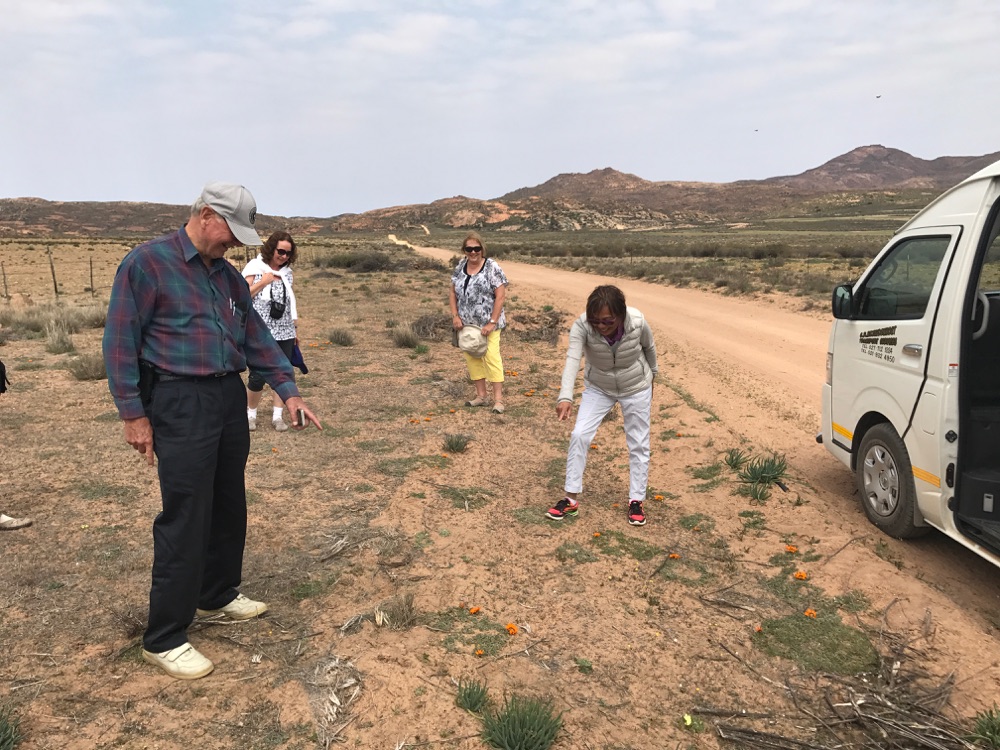
Namaqualand, one of the world’s top landscape wonders for majestic spring flower displays, is in the grip of the worst drought in 100 years.
As a result, there are few, if any flowers. It is a total waste of time coming to Namaqualand right now to see blooms – there are none.

I spent all day scouring the landscape here with a group of 32 Canadians for any sign of the sensational displays of flowers that usually carpet the hills and mountain slopes of this area, north of Cape Town and close to the Namibian border.
We hired three vehicles and went in search of flowers, starting out in Springbok and heading south to Kamieskroon and into mountains around Leliefontein and Witwater and Studer’s Pas.

Our efforts were exhaustive. We were working harder than botanists from top botanical gardens to find signs of flower power. We got out of our vehicles multiple times to examine the ground and occasionally found a small show of flowers.
We travelled on bumpy, rugged, gravel roads, bouncing around in our seats as we went, for hours and hours, looking for traces of flowers.
The area is totally arid and devoid of any flowers but for a bush here and there were yellow flowers and the pale grey of bush sages and rosemary.

In Garies, there is a water shortage that has become a serious crisis with some residents being without water for more than three years.
Local residents tell me they normally get 400 millilitres of rain a year but since last October they have had less than 75. The hills and landscape are dry and totally arid without a trace of the tens of thousands of colourful flowers that usually carpet the fields and slopes.
In Karas, we finally found a small property where there had been a little rain that had resulted in a burst of flowers, mostly orange and yellow daisy-like flowers.
The hillsides around Karas were tinged with orange as other seeds threaten to germinate and yield a spectacular show of flowers. It may still happen, but not in time for the height of the tourist season, which is now.

Wouter Jordaan, who has lived on the property in the Karas area for 20 years, says it is the worst drought since 1903, although the area has also seen droughts in the 1930s.
“We normally get a good rain in January and more in June and July but this year has been particularly dry with no rain for months.”
The area has also suffered heat waves over the past month with temperatures hitting 40 C.

Tourism agencies, like the one we relied on for information, were reluctant to tell people not to come to Namaqualand because they expected rain and with even a few days of steady rain the flower seeds can germinate and produce the world-class spectacle that everyone comes here to see.
No one knows for sure the reason for the drought. Some point to climate change, others think it is just a natural shifts in weather cycles, but what is clear is that the area is extremely dry and rain is not in the forecast.
Nevertheless, the rugged, rocky hills of Namaqualand are still extremely attractive and worth seeing.

















